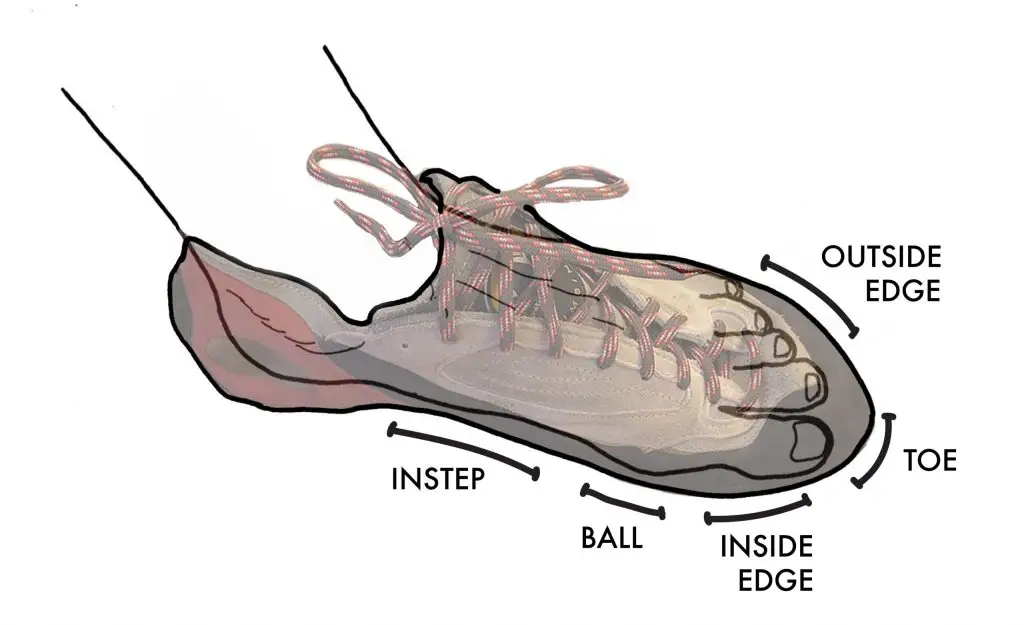It's All About Your Foot (Well, Feet).
Foot switching is a lost art for indoor climbers, but one which has a great deal of practical value. Add this technique to your repertoire of climbing skills and it will prove itself essential. So, what is it exactly?
Foot switching is the process of swapping one foot for another on a foothold. This allows you to use the foothold that best suits your next move, even if your other foot is already using it!
And, despite what climbers often think, it can be a challenging skill to master. In this article, we will focus on swapping an inside edge for an inside edge. If you’re new to climbing, read this refresher on understanding your climbing shoes.
Don’t Just Hop
The goal with foot switching is to have as little movement as possible when doing so. Newer climbers tend to switch feet with a small hop. They tend to hop the bottom foot off of a hold and then drop the other foot down in its place.
This method seems natural to most climbers and is a habit that often “pops up” as it were, intuitively. Unfortunately, it also has numerous drawbacks.
It does not work well on smaller feet, as the climber frequently misses the mark.
It causes a lot of sideways motion of the hips, requiring the climber to hold on excessively with the hands.
And finally, it creates excessive downward shock on the foothold, causing climbers to slip off sloping holds and smears.
As a result, if you have already begun to foot switch this way, you now have a good candidate for some “unlearning”.
The Correct Way to Foot Switch
To unlearn a habit, your best approach is to replace it with a more effective one. To that end, a more subtle approach is required. The process can be broken into the following steps, starting with one foot on a hold, on the big toe (inside edge).

Step 1
Starting from a good front step position, twist your foot on the hold out until your knee is almost facing the wall, your foot not quite perpendicular to the wall. This is to create room for the next step.
Step 2
Bring the heel of your other foot (the upper foot) in front of your shin, above your lower foot–like you are going to cross your legs. The upper foot should be oriented parallel to the wall, with the inside edge closest to the wall.
Step 3
Bring your upper foot far enough over so that your upper foot big toe is directly above your lower foot big toe, and gently rest (but do not push down!) on top of your lower big toe.
Step 4
From this position, “pop” your lower foot straight back and off of the foothold. The goal is to do this with no movement of your hips at all. To accomplish this, you pop your lower foot by doing a backward kick just from the knee.
In other words, not using your upper leg or hips to move the foot. We call this a “mule kick”, and is often explained as kicking your own butt.
Step 5
Allow your upper foot to drop onto the foothold in precisely the same location as your lower foot just was.
Key Tips
While this is a complicated process to describe, it is relatively straightforward to demonstrate, and the feel comes quite quickly when executed properly. The key to developing an intuitive feel for this move is to focus on the following aspects below.
The big toe of the upper foot needs to land nearly exactly where the big toe of the lower foot just was. A difference of even a few millimeters will result in either an awkward position or slipping off the hold. As a result, the proper placement of the upper foot before the lower foot is popped is critical.
The hips should have no sideways movement during the process.
Once mastered, this process should come as naturally as placing your foot on an unoccupied foothold.
The Value of Foot Switching
This last tip mentioned above demonstrates one of the values of this technique. Many climbers tend to assume that if a foot is already on a foothold, the other foot must find something else to stand on.
But, in reality, this technique gives climbers greater flexibility to choose the best foot for a move, whether it’s occupied or not!
This method can and should be used on all foot switching, on all footholds, at any angle. Enhance your climbing with this essential skill and use the technique on slab or vertical, and indoor or outdoor climbing. Happy foot switching!
All material is reprinted with the permission of the author. Copyright 2022 David H. Rowland. All rights reserved.




